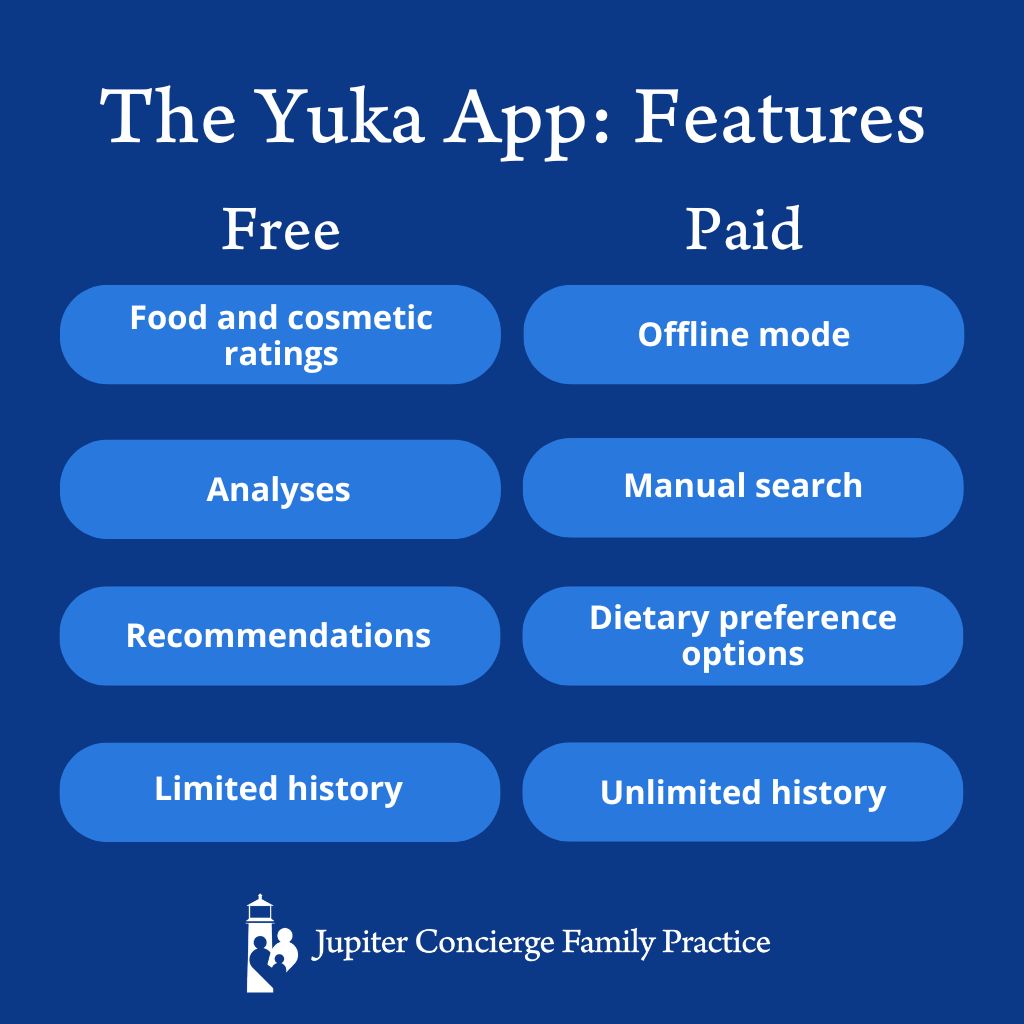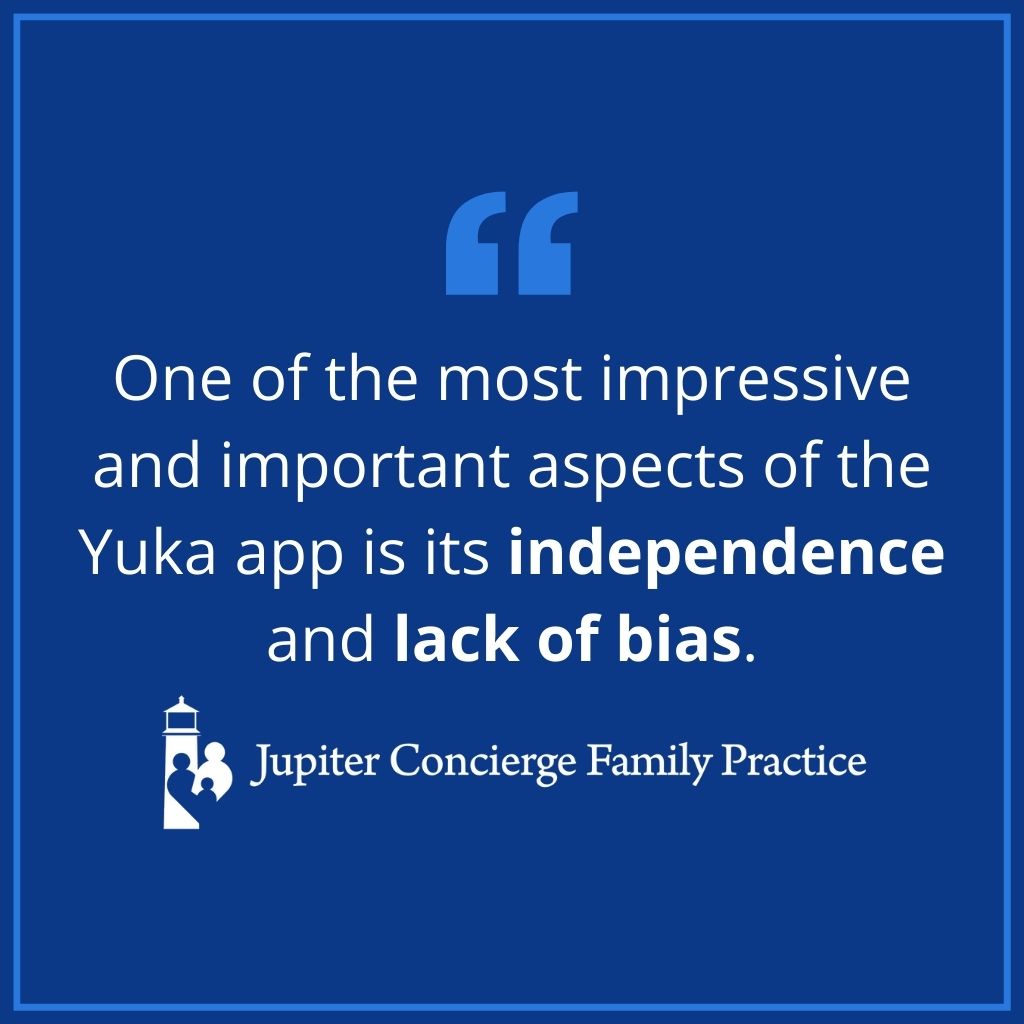
When it comes to health, knowledge is important. Yet no matter how much knowledge you have, knowledge without action is useless.
We all face an incredible array of choices in modern-day American supermarkets. While sticking to the perimeter of the store and aiming to buy a wide variety of colors certainly helps, nearly all of us have to venture into the middle aisles at some point. And when we do, we encounter different degrees of processed foods.
Even the healthiest consumers still have a diet containing 20–30% processed foods. Our lives simply aren’t conducive to grinding our own flour or making our own pasta from scratch. It’s the reality of modern life.
So how can we choose the healthiest possible options while perusing those center aisles?
One positive modern-day development is all the handy new tools at our disposal, some of which can assist us in making healthier choices. To that end, I recently discovered a helpful app called Yuka.
How I Discovered Yuka
In truth, I should say that my daughter — who’s 24, health- and fitness-focused, and far tech-savvier than I — discovered Yuka. She came across this app, which allowed her to make better food selections.
After she shared it with me, I looked Yuka over with my background in chemistry and medicine. My thoughts? This is the missing piece that would help both myself and my patients become better consumers at the supermarket.
Note: I feel it’s necessary to say here that I’m not affiliated or partnered with Yuka in any way. These are my genuine thoughts on its usefulness.
How the Yuka App Works
The Yuka app rates foods on a scale of 0–100, with 0 being the least healthy (think margarine or a highly processed fat) and 100 being the most healthy (like water). To get a rating, you use the app to scan a food product’s barcode, and the app applies a score by looking at factors like:
- Calories
- Preservatives
- Food coloring
- Sodium content
- Other additives
Any score over 50 is good, but foods rating under 30 should be avoided. Try to mainly choose products in the 60–70+ range.
One function I find particularly helpful is the app’s suggestions. If an item you scan gets a low score, the app will recommend healthier alternatives to that product.
For example, when I started using the Yuka app, I scanned some crackers already in my pantry; they scored about a 10 (yikes!). The app detailed all the preservatives and processed oils in the product, but it didn’t just leave me cracker-less.
Instead, Yuka recommended another cracker that scored a whopping 85, which I then purchased. And I’m delighted to say the new crackers tasted even better than the originals! Now I can have a processed snack from the supermarket aisles that’s still relatively healthy compared to my other options.
Yuka maintains a database of over 3 million food products and 2 million cosmetic products so they can provide scores for as many items as possible. They’re constantly adding products (1,200 per day, according to their website), so I find there’s rarely something the app can’t help me evaluate.

The Yuka App: Free or Paid (and Why It Matters)
While the Yuka app offers a free version with its most basic features (food and cosmetic ratings, analyses, recommendations, and limited history), its paid version provides several additional functions (offline mode, manual search, dietary preference options, and unlimited history).
One of the most impressive and important aspects of the Yuka app is its independence and lack of bias. The app includes zero ads or company sponsorships, meaning Yuka is free to evaluate products according to its own criteria without outside financial pressures or influences.
So how does Yuka stay afloat? Instead of depending on advertising dollars, the company relies on modest subscription fees collected from their premium subscription users. I appreciate this model since it means Yuka can provide fair third-party assessments without any incentive to rate things as healthier than they really are.
Again, I have no affiliation with Yuka myself; I just find it to be a wonderfully helpful and unbiased tool.
How to Find Healthy Foods Without an App
If you can’t or don’t want to use the Yuka app, you can certainly take other routes to evaluate the quality of processed foods.
A simple alternative method is to read nutrition labels with these principles in mind:
- If you can’t pronounce an ingredient, you probably shouldn’t eat it.
- Labels list ingredients in descending order of quantity, so avoid products in which less healthy ingredients (like sugar or one of its many variations) appear close to the beginning.
- Examine the nutritional elements per serving, and remember that higher amounts of ingredients like sugar and saturated fat mean a less healthy choice.
Modern Tools and Healthy Habits
Even with the best of intentions, making healthy choices isn’t always easy in today’s supermarket landscape. But the development of tools like Yuka can put the information we need right at our fingertips. I highly recommend taking advantage of such resources to help turn your healthy intentions into a practical reality.
I’m sure Yuka isn’t the only valuable app out there, and more are likely on the way. Let me know if you decide to try it and how it works for you. Or, if you discover another tool you find helpful, please share it with me! I’m always eager to learn new ways we can better integrate healthy habits into our lives.

Dr. David Rosenberg
Dr. Rosenberg is a board-certified Family Physician. He received his medical degree from the University of Miami in 1988 and completed his residency in Family Medicine at The Washington Hospital in Washington, Pennsylvania in 1991. After practicing Emergency Medicine at Palm Beach Gardens Medical Center for two years, he started private practice in Jupiter, in 1993. He is an avid baseball fan and Beatles fanatic, since he was 8 years old. He has been married to his wife, Mary, since 1985 and has three grown children.
David completed additional studies at Mercer University, Macon, Georgia and obtained a BS in Chemistry in 1983.
“My interests include tennis, snow skiing, Pilates and self-development.”

